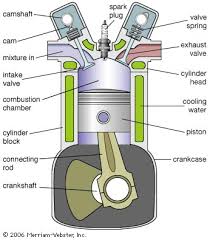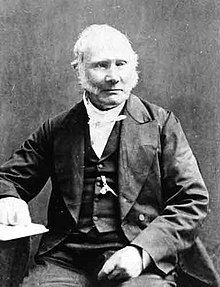Background
If you are unfamiliar with
the Stirling engine, use
your
search engine and you will discover that the Stirling engine is a very
promising technology that has never lived up to its potential because
of the high costs to manufacture, the low power output, and the
unresponsiveness of the engines. This design solves the power
density and costs issues.
These engines prefer to
run at one continuous speed which is
only moderately influenced by fuel input. Do not expect to
"rev"
your Stirling engine. Consequently, do not attempt to utilize
a
Stirling engine where there is the need for sudden acceleration, such
as in non hybrid cars or aircraft. You don't want to be
flying
your homebuilt airplane, stall, and then expect the Stirling engine to
save you. The response is simply too slow. Non
hybrid
aircraft propulsion is the best example of the wrong application for
this engine. Instead, choose the right application and you
will
love the economy and quiet operation that are the hallmark of the
Stirling.
Imagine an engine that
runs without the noise
of
fuel exploding out of the exhaust valves, instead, the fuel is burned
quietly similar to a gas log fireplace or your water heater.
No
complex plumbing of either fuel or air supply is needed. The
air
and fuel follow simple plumbing to the area where the heat is needed,
they combine continuously, efficiently, completely, cleanly and the
exhaust
gases are then plumbed away. No complex ignition system or
timing
circuits are required. With the Stirling's
continuous
flow, air and fuel valves don't open and close every time the
piston completes a stroke. Instead of controlling air, fuel,
and pressurization
each stroke of the piston, the Stirling controls the heat energy of the
fuel after the fuel and air are combined. Moving the working
gas
inside from the heating area to the cooling area is much simpler and
more efficient than creating heat exactly where and when it is needed
for each stroke of the piston and then wasting most of it out the
exhaust ports. This is the most difficult part of
Stirling operation to grasp; Air can be heated and cooled
(causing expansion and contraction) over 1500 times a minute.
Search u tube.com for videos that prove that this is true and that
these
engines actually work. Once you grasp this concept, the
Stirling's simplicity will enchant the engineer in you.
The
internal combustion engine has, until now, overshadowed the Stirling
engine
in performance with the ability to process chemical energy into motion
at a much higher rate and in a more compact form. A four
cylinder
gasoline powered internal combustion engine can convert a gallon of gas
into work in under 15 minutes. The Stirling engine has always
had
a bottleneck in the energy input that prevented compact high volume
throughput of energy. This design directly addresses that
bottleneck as well as some of the complexities that made the Stirling
engine expensive to produce.
|

A
traditional design for reference.
compare to the internal combustion engine.

Fewer parts finaly means lower costs, (just as soon as we get the
volume )
Parts that the Stirling engine doesn't need:
seperate starter, (utilizes the alternator),
fuel injection system (burns like a Coleman (R) stove),
complex ignition system (just one
piezo electric spark to start the heat source),
high pressure fuel pump,
turbo charger,
valves,
timing belt,
camshaft,
rocker arms,
oil pump,
oil filter,
oil pressure monitor,
check engine light,
intake manifold,
exhaust manifold,
catalytic converter ( catalyst used in combustion area),
EGR valve,
oxygen sensor,
muffler
Maintenance that the Stirling doesn't need:
Oil changes,
spark plug changes,
timing belts, valve adjustments,
ignition wires,
oxygen sensor,
check engine light
|
|
Applications
Stirling engines run on any heat
source, from geothermal
to solar to propane to wood. Anything that produces heat can
potentially power this engine. Consequently, if you have
waste
heat, why not use it to power your lights and heat your water?
Stirling engines are quiet and
reliable. If you
need a portable generator for a mobile home, off the grid homes and
offices or trade shows, consider the Stirling. The cooling
cycle
of the engine can be plumbed to provide you with hot water.
Running
a Stirling engine in reverse, causes it to pump
heat from the hot side to the cold side. This is how
commercial
cryocoolers work to convert air into a liquid. This design
can be
used as a heat pump, either cooling or heating fluids as
desired.
If you have need of refrigeration and don't have electricity, this
design can be adapted to produce power from fuel on one side and heat
pumping on the other. If you have a noise issue with
conventional
refrigeration, or want to use non polluting refrigerant gases , this
might be the ticket.
Just as important as when Stirling engines make sense is
recognizing when they don't. Stirlings are only moderately
responsive to fuel input. Do not use this engine where
responsiveness is an issue. |

Possible engine
fuel source

"...it was a pit
fire with poop. The pot doesn't smell like poop, it smells like a
mesquite fire because the cows like to eat the mesquite beans from the
trees."
(http://www.craftster.org/forum
/index.php?topic=318202.0)
|
History
The Stirling
engine has been around in
various forms since
1817 when Robert Stirling patented his first design. Even
earlier
variations of this device are speculated to have been employed to
move massive
doors in Roman temples over
2000 years ago.
Current designs are found in cryocooling,
home
energy generation, solar
power generation, submarine
propulsion, and space
craft power generation. Attempts to utilize the Stirling
engine
in automobiles were unsuccessful. This may have been due to a
tendency to treat the Stirling engine as a poor substitute for the
internal combustion engine. A more appropriate alternative is
to
treat the Stirling engine as a unique power source;
certainly,
its distinctive characteristics recommend it to a variety of
applications entirely outside the realm of the internal combustion
engine. Just as the electric motor and the turbine are each
uniquely suited for certain tasks, so too is the sterling engine.
Two variables have heretofore inhibited the widespread
adoption
of the Stirling engine - cost and power density. Lower
manufacturing costs and increased power output, give the
Solar-Miller (tm)
Stirling engine a competitive edge over all previous
applications.. |

Robert
Stirling
A quick word on
maintenance and
repair. little. That is right, these engines are
sealed
at the factory, you can't open them beyond re-pressurizing the working
gas. The bearings are located away from the heat source and
have
very little stress on them. The output shaft seal, if you are
using a sealed one can be changed without accessing the inside of the
engine. If you manage to break the output shaft, or drop
something on the case that bends it, or drill a hole into it, well,
they don't cost that much. On the other hand, if you
recover the engine after it has been submerged in water, simply hose it
off and you are good to go.
And they are designed to be recycled.
|





